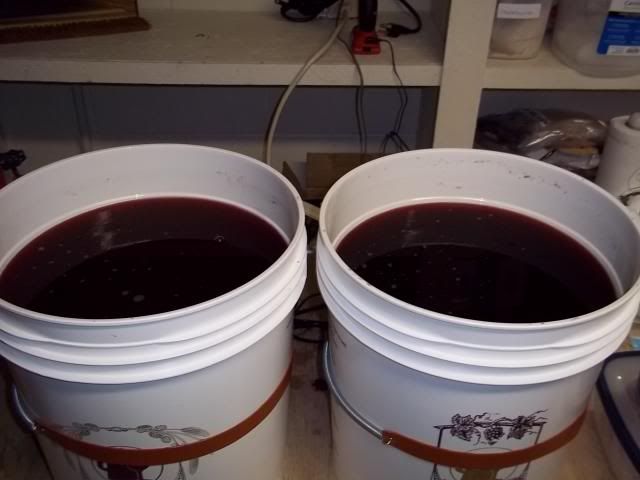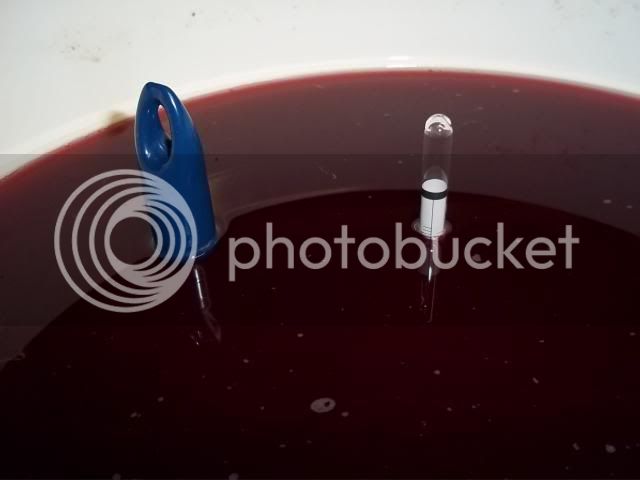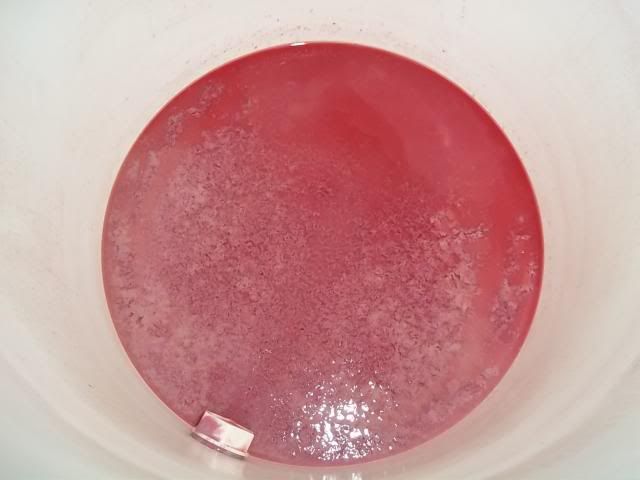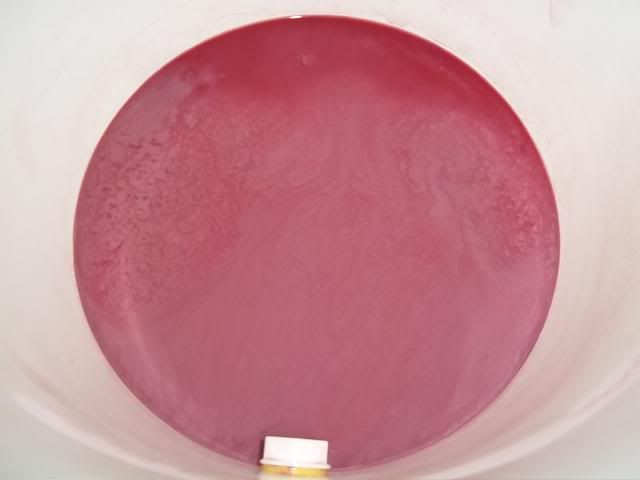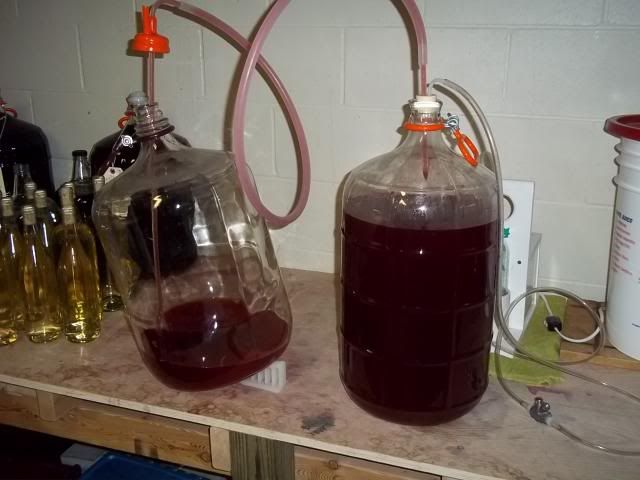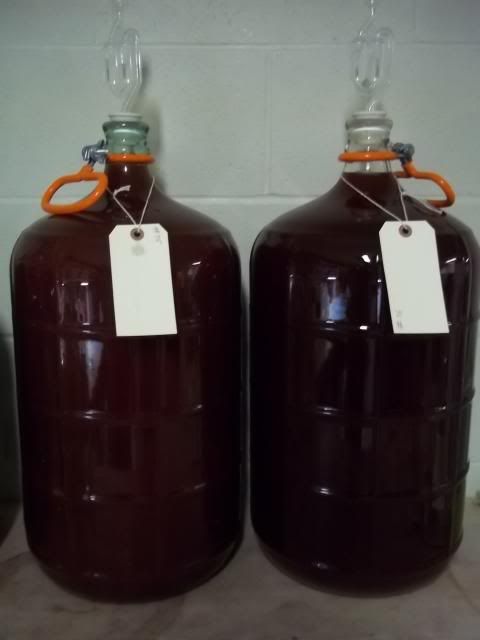
Woops! Got busy this past week and forgot to update...
Day 9: After the wines had sat for a few more days, I pulled the lids back and had a look. They appeared the same...
I drew a small sample of each for a sniff-taste. Without a doubt, the EC-1118 gave the DB more of a distinct tartness, while the 71B-1122 was much smoother and fruitier. The taste carried over into the aromas as well, with the EC nipping at the nose a bit. These descriptions are taking into account any preconceptions and the fact that, at this stage, the wines are new-born and non-sweetened.
Both batches sat squarely at the SG of 0.992 at 72F.
After I carefully drained the contents of each batch into their respective carboys, I had a look at the lees. The EC's lees (below-top) appears slightly "chunkier" than the creamy consistancy of the 71B lees (below-bottom).
I then degassed each batch by running them---separately---one time through my "falling-film-degassing-widget" thingy using my handy-dandy
allinonewinepump (below). I usually rack batches of wine several times under vacuum to be sure they are thoroughly degassed before clearing. These I did only once, for a reason. I want to see if the yeast used has had any effect on the amount of gas released or retained by the wine. Both wines appeared to produce very little gas at this point---which may have more to do with my treatment of the wines during fermentation than any effect of the yeasts.
The batches were moved to the bench, and treated with Sparkolloid. It appears that the 71B (right) has produced a slightly darker DB.
They will be left to clear completely, then I'll taste again before and after back sweetening.
Stay tuned...if you dare!!! ::
















































![[Upgraded] 9Pcs Tree Root Growing Box with Drain Holes, Half Transparent Plant Rooting Propagation Ball & Metal Core Twist Ties, for Fast Propagation Plants (Size M)](https://m.media-amazon.com/images/I/514MWQxtWOL._SL500_.jpg)









 Woops! Got busy this past week and forgot to update...
Woops! Got busy this past week and forgot to update...